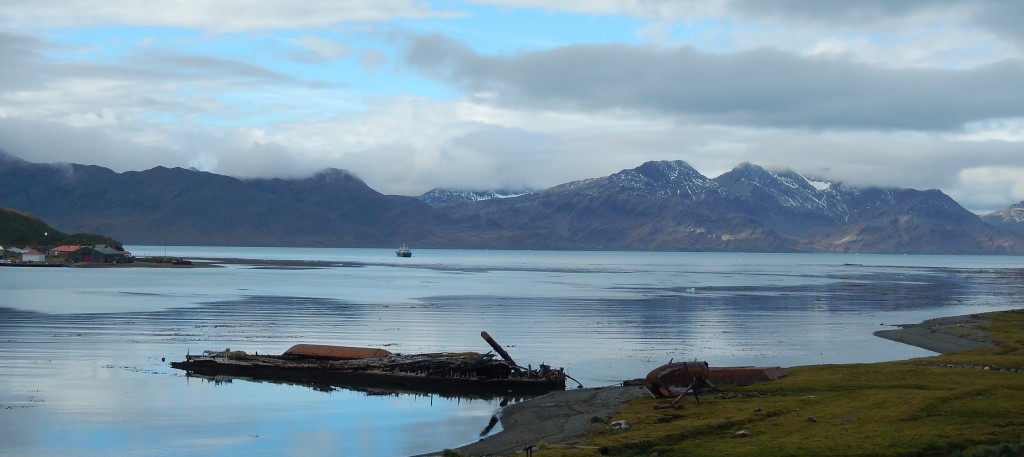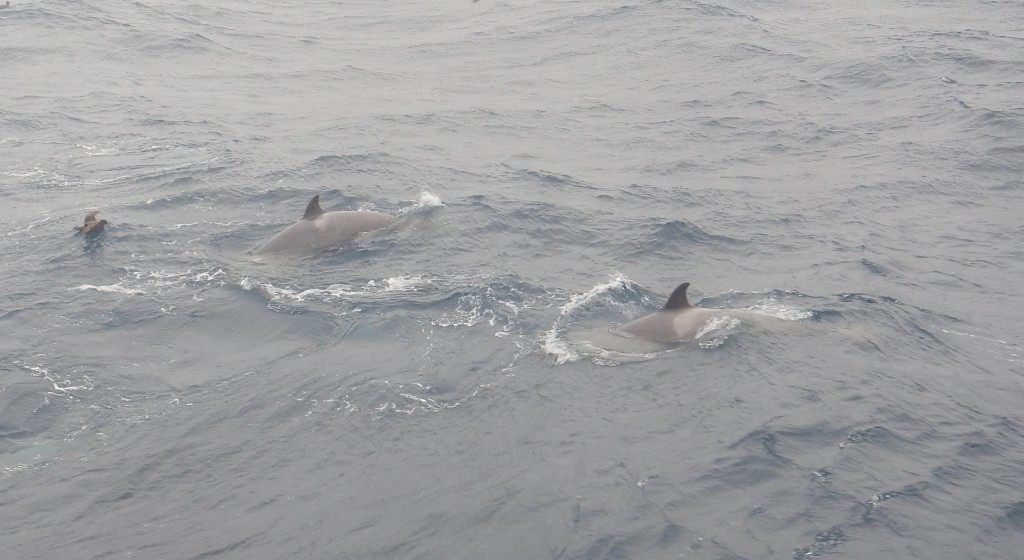A blog written by Sea Watch volunteer Hannah Nutt. Hannah was the person who started our Instagram account for us, are you following? She’s also helped with home-based data entry as well as heading out as an observer for us on the Cefas Endeavour. Here, Hannah tells us of her latest adventure..!
“Fancy skipping the British summer for 5 months on a commercial fishing vessel in the Sub Antarctic?”
Are you mad? I hear you scream! Yes, probably.
Back in March this year I applied for a position as a Fisheries observer in the (very) South Atlantic Ocean on board a commercial fishing vessel for around 3 months, possibly longer. My boyfriend also does a very similar position at the other end of the world in the Bering Sea, Alaska. And, honestly there was a little voice that said “if he can do it, so can you!” However, this was a slightly different ball game. I was the only female on board for starters, and the only English person with one or two other people on the vessel who spoke some English. It was a Chilean vessel and I speak zero Spanish. See, definitely bonkers. I will back up for a moment and explain the process. I applied but actually sent a BLANK application form somehow. Luckily I realised my error a few days later as I just happened to check my document. OOPS! So, I re done the application form and received a phone call a while later to explain more about the job, how tough the conditions would be, the language barrier, and so on. After all that, it didn’t deter me and I said “count me in!” I was sold when “humpback… orcas… sperm whales and beautiful views” was mentioned. Training was a 5 day course with lots of presentations, guest speakers, practicals, paperwork, an exam and finally a certificate certifying I was up to scratch for the job.
I have to say March 2017 was the most manic month ever. I squished applying for the job, going away to Dublin for St Patrick’s weekend, leaving my full time position, training for a week and an 8 day holiday to America to visit previously mentioned boyfriend AND preparing to spend the next few months on a boat! To calm the panic, I packed for all that in a record breaking 1.5 hours. Nerves calmed. So with terrible jet lag from landing back from America, I flew to Chile around 17 hours later and began this fantastic adventure! I will skip over the 10 days twiddling my thumbs in a hotel waiting for the vessel to be ready.
The training materials helped every step of the way as I got to grips with the tasks required, general vessel operations and unfortunately the sea sickness! (This passed after a few days and kept away for the remaining 5 months which was a great relief.) There was a lot of tasks to complete on a daily basis as well as ensuring the vessel was operating within the guidelines it had agreed to. For example, I recorded fishing operations to ensure lines were set within suitable time frames to protect seabirds. A fisheries observer also keeps an eye on waste disposal to protect the marine environment from harm. Another crucial task is to record what species are caught, as it is important to avoid bycatch, which is helped by effective gear setting strategy. I also spent a lot of time in the factory, which was really enjoyable as I was responsible for tagging and releasing tagged fish back into the ocean. This was incredibly important as when the tagged fish were recaptured, the growth in total body length could be assessed for setting quotas and fisheries management. Of course, my other favourite part of the job was being out on deck (in many, many layers) with binoculars and a camera. As a side note, I use Opticron Marine-2 7×50 BIF.GA / IC . I have occasionally grabbed a nearby pair of binoculars on the bridge to use and they are never as good as my Opticrons, so if you are in the market for a new pair of bins then they are worth every penny and probably will be the only pair you’ll ever need to buy.
Anyway, I digress.
I always remember seeing an incredible species for the first time; first hammerhead (wow!), first elephant herd – those memories last a lifetime. In this position, I’ll always remember seeing the dorsal of a Killer Whale for the first time. Nothing is quite as iconic as the large, tall black dorsal fins on these bad boys. They quite literally took my breath away. Seeing a pod move around near and far was incredible, how the older individuals flanked the youngsters and dive in unison was fantastic. I had multiple sightings across the season of Orcas as well as Sperm Whales. In comparison to the fast moving, swift Orcas, Sperm Whales were more graceful in their movements. They usually appeared either alone or in groups of 2-5 but spread out much further. However they were a little harder to keep track off as they can dive to great depths and they have an amazing breath hold. I believe one tagged individual dived to around 2000m for 1 and a half hours! I always had to squeal seeing their tail fluke go down beneath the waves.
I really did enjoy my role as a fisheries observer, and if you want to get a clearer idea of what the role specifically entails, then follow this link.
This position taught me a great deal about fisheries management, dispelled some myths, gave me memories to last a lifetime, an even more intense hunger for adventure, and furthered my career in marine conservation. A success all round! However, this job definitely isn’t for the faint hearted. Yes, there was bad weather with swells that I thought might swallow us up, a longing for food familiar to my palate, and wishing for the day where my phone actually worked and didn’t just serve as my alarm. That being said, offer me a never ending work schedule and adventure, or a desk and a 9-5 and I think you know what I would pick every. Single. Time.
*
I hope you have enjoyed my short blog on observing in the South Atlantic, follow me on instagram @hannah.nutt to see more of my experience, and also @life.of.a.luzer for some Bering Sea/Alaska shots.


























